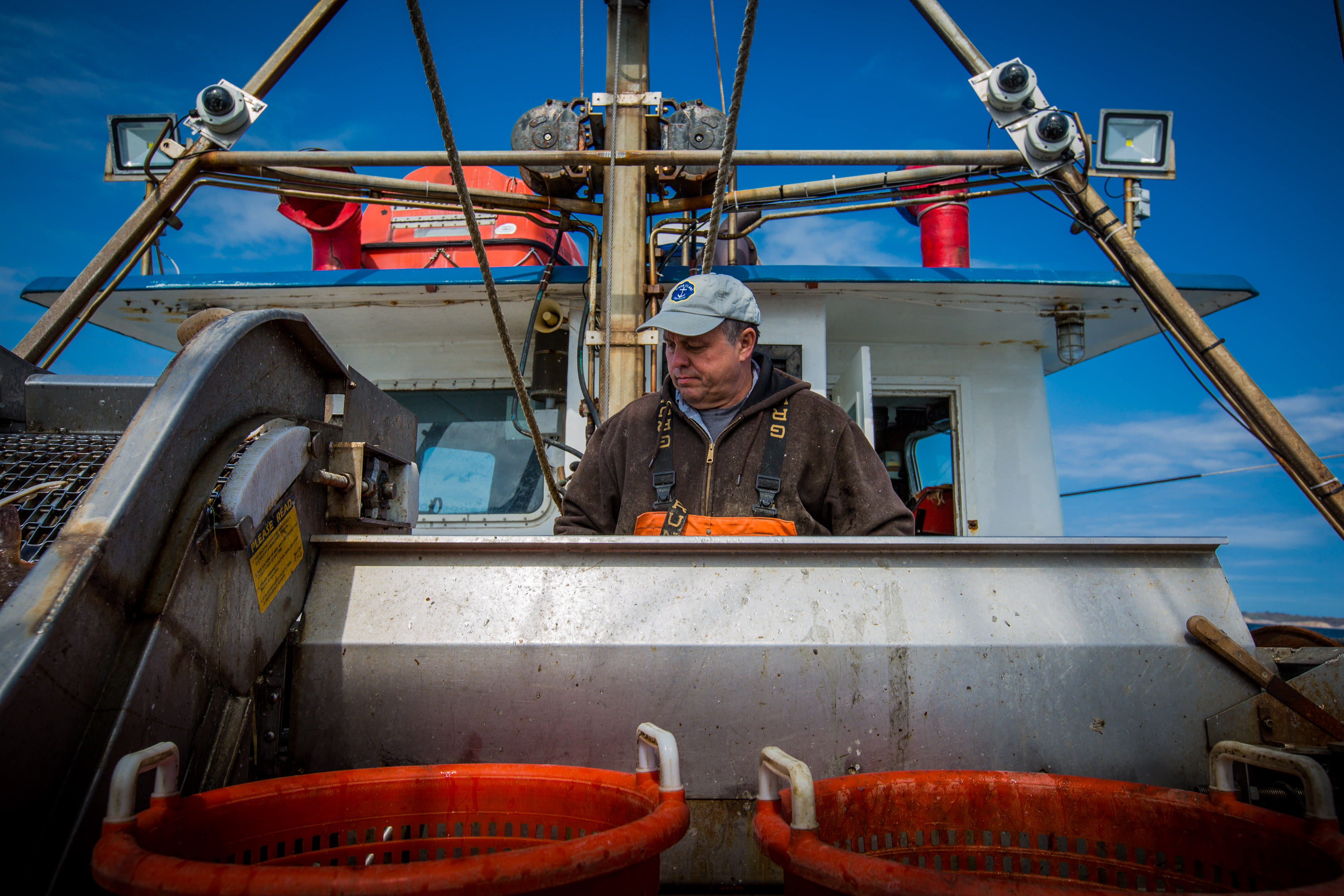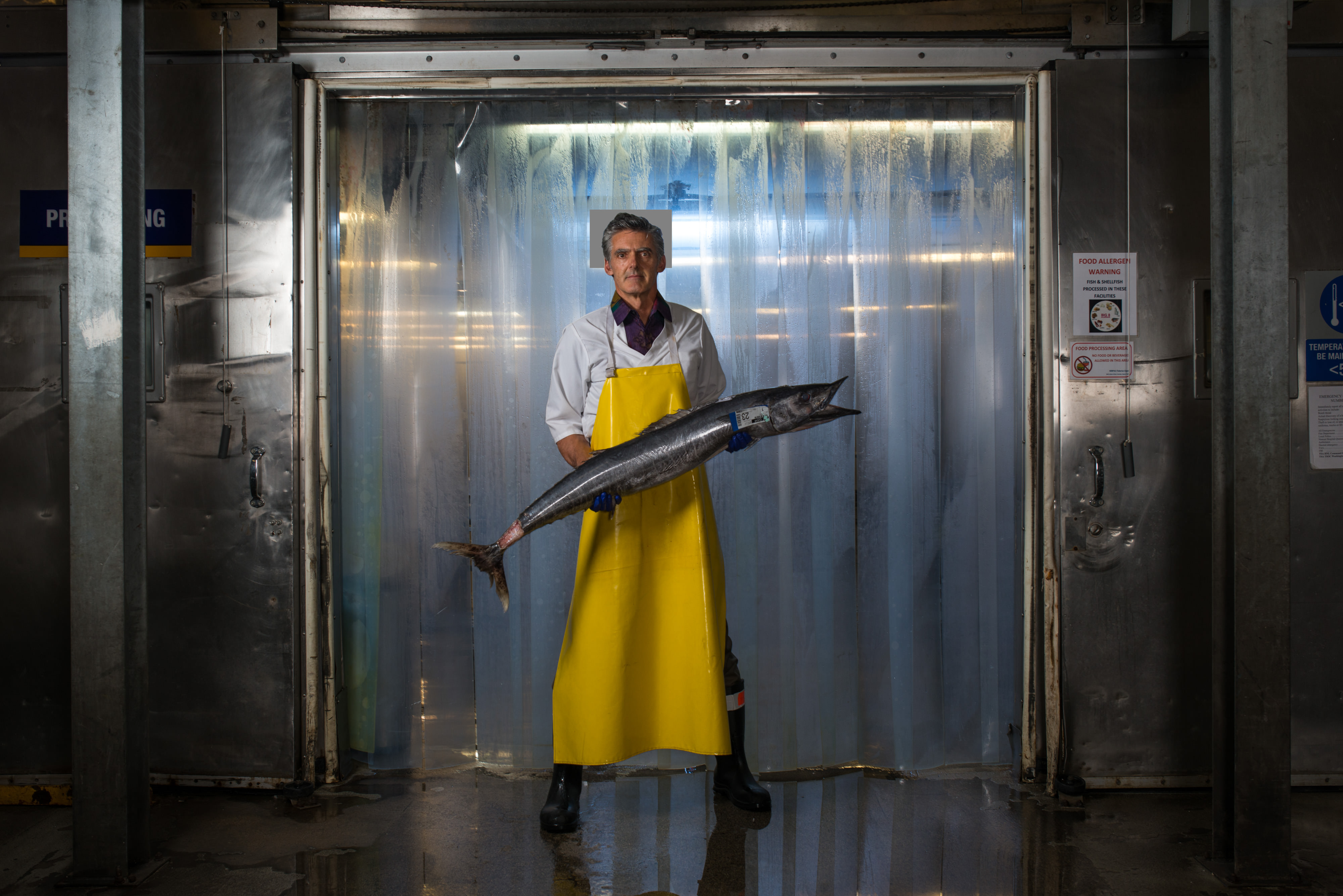March 13, 2024
When nature and people face difficult challenges, it’s important that we work together to find a solution. When the problem is complex – as it often is – finding the best way forward requires working closely and thoughtfully with the people and communities who understand the issues best. That’s just what The Nature Conservancy is striving to do as we work to address the concerning trends in the endangered North Atlantic Right whale population.
On January 28, a North Atlantic Right whale washed up dead near Joseph Sylvia State Beach on Martha’s Vineyard. While the cause of death has yet to be confirmed, aerial survey teams had previously seen this whale entangled in fishing gear several times, including in August 2022 and January 2023. The necropsy report that followed concluded that the three-year old whale suffered from chronic entanglement, with rope deeply embedded in its tail and a thin body condition.
This recent right whale death is part of a concerning trend. Since 2017, researchers have documented over 120 right whales that have experienced sublethal or lethal injuries or illness in the North Atlantic in something ominously referred to as an Unusual Mortality Event, with 38 whales found dead and another 34 seriously injured since 2017. As things stand today, it’s estimated there are only about 350 right whales left, with fewer than 70 adult females remaining to sustain the population.
If we’re going to reverse the troubling trends in the right whale population, we need an approach that includes the fishing community. Fishermen have long been key partners in the efforts to reduce entanglement risks, and they will be directly affected by any new regulations. This is especially critical in the face of climate-driven changes to the ocean ecosystem, which are acting as a threat multiplier.
The Gulf of Maine is warming faster than 90 percent of the world’s oceans, and the right whales’ preferred prey source – the microscopic copepod Calanaus finmarchicus – is shifting its distributions in response. These changes are exposing right whales to even greater risks from ship strikes and entanglements and making it even more difficult for scientists and regulators to know where whales will be and what times of year they will be there. Climate change is also impacting our fishing communities, as we saw in the recent historic storms that wreaked havoc on our coastlines and caused millions of dollars in damage to the working waterfronts upon which the fishing industry depends.
We need an all-hands-on-deck approach that empowers fishermen, scientists, and others to use their knowledge and experience to help find solutions to address these risks. Fortunately, actions are being taken now. The National Marine Fisheries Service recently published a proposed vessel speed restriction rule to help reduce ship strikes. The North Atlantic Right Whale Take Reduction Team is developing additional gear restrictions for trap, pot, and gillnet fisheries to reduce entanglement risks. And the state of Maine recently secured $17 million in federal funds to expand efforts to better track the migration of whales with passive acoustic sensors and aerial surveys. But more needs to be done.
At The Nature Conservancy, we are working at the national, regional, and state level to help solve the problem. At the national level, we are pursuing a comprehensive strategy to promote policies that reduce carbon emissions by rapidly deploying renewable energy. In the Northeast, we are working to help ensure that the Bureau of Ocean Energy Management uses the best scientific information available to reduce risks to protected species, including right whales, as it makes siting decisions for offshore wind development. And here in Maine, we are partnering with the Department of Marine Resources (DMR) to launch the Maine Innovative Gear Library, which will advance the testing and implementation of on-demand/ropeless fishing gear in the lobster fishery.




